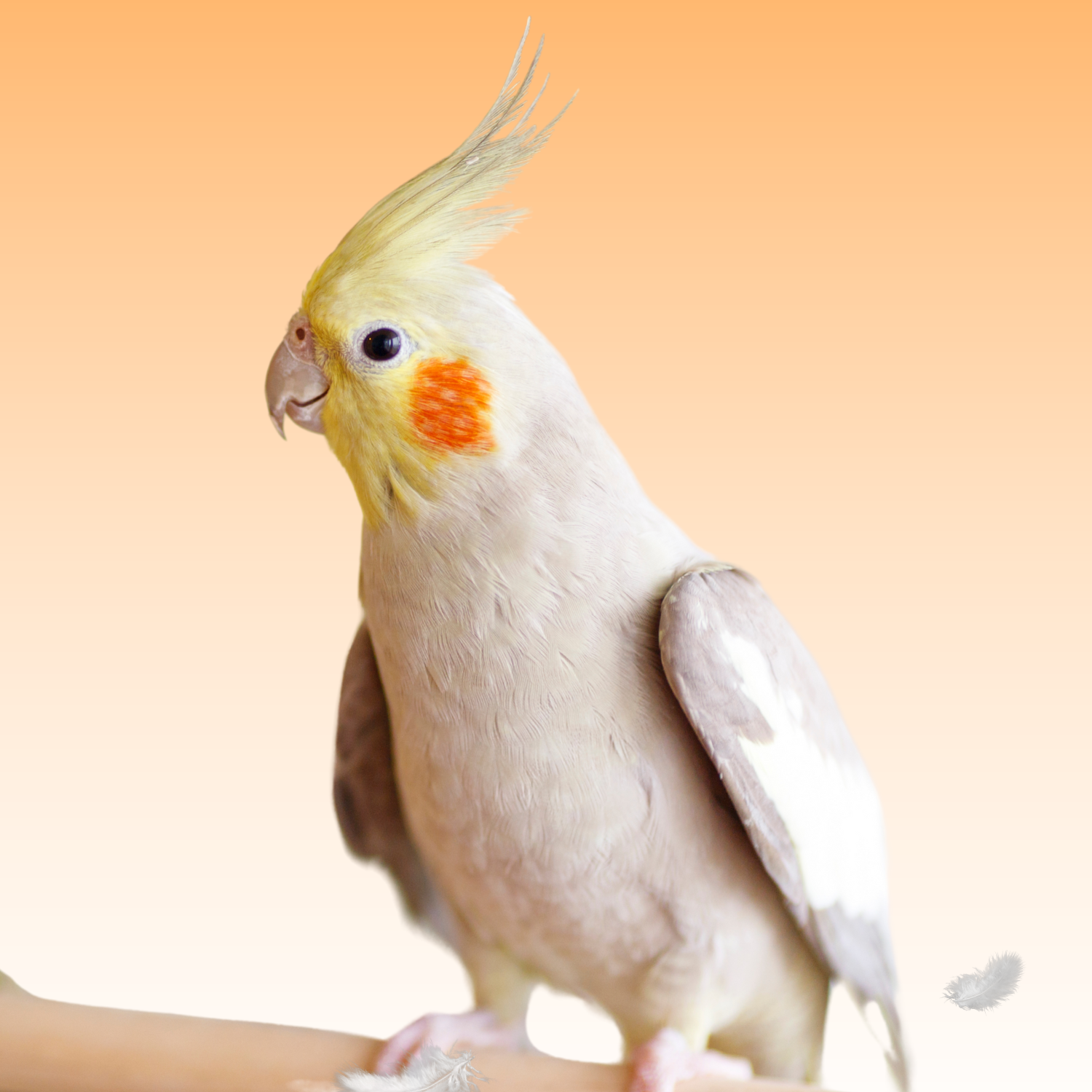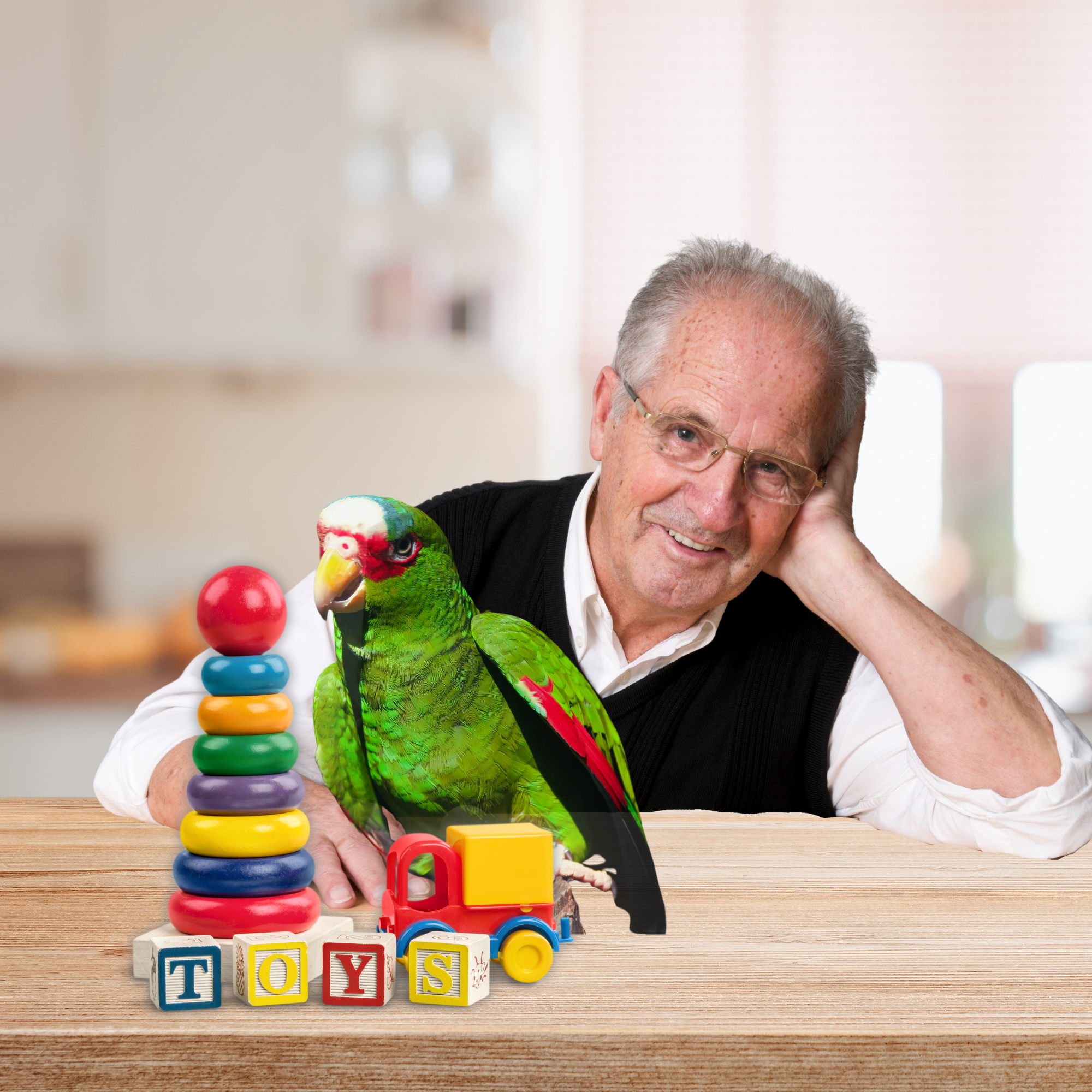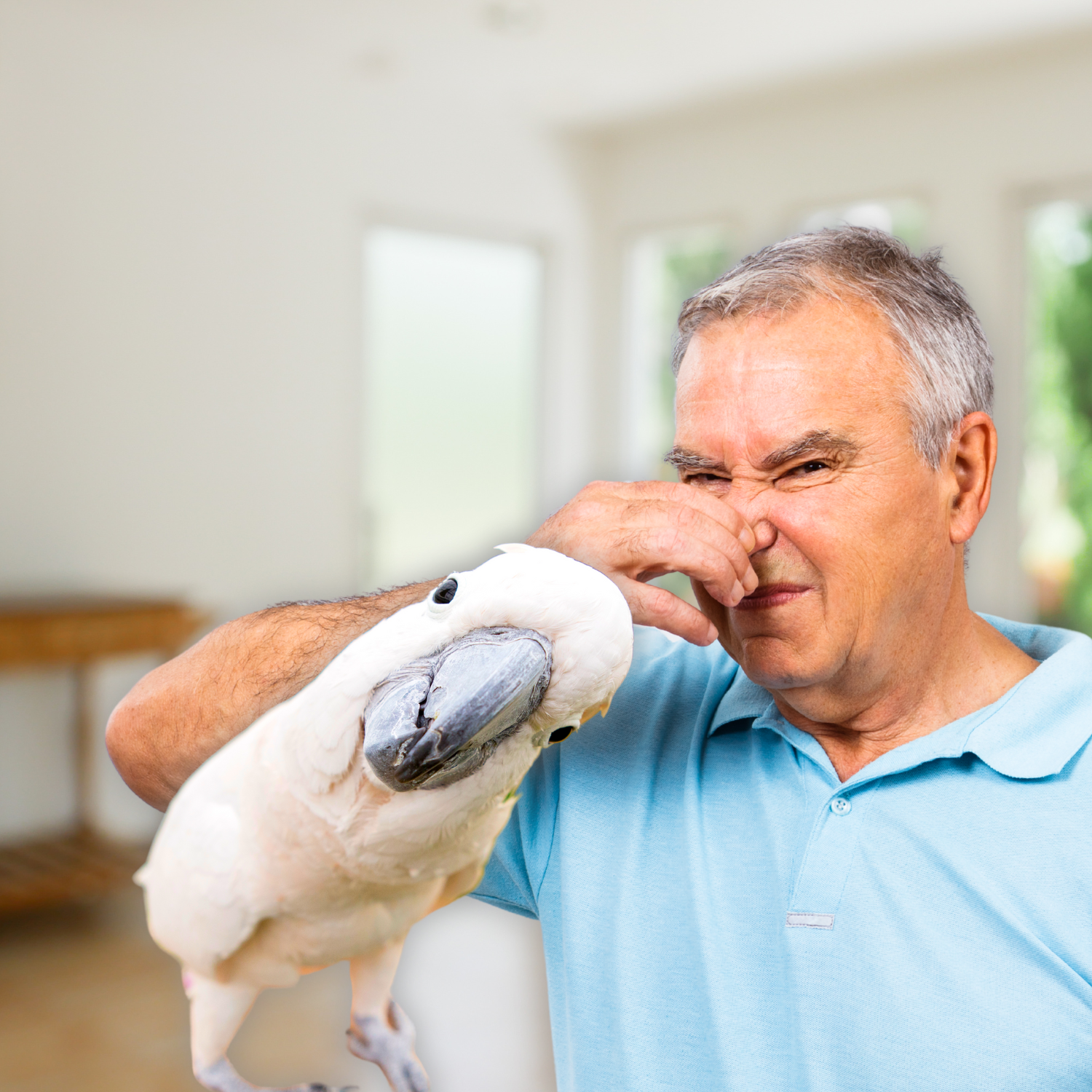- Why Cockatiels Molt (and What You Can Expect)
- Understanding the Cockatiel Molt Cycle
- How to Know If Your Cockatiel Is Molting
- Is This Really a Molt? Or Something More Serious?
- Feeding a Cockatiel During a Molt
- Making Your Cockatiel Comfortable During a Molt
- Create a Simple Cockatiel Molt Care Plan
- When to Worry About Molting Birds (Cockatiel Edition)
A molting cockatiel can leave you freaking out—feathers everywhere, a moody bird, and no idea if it’s normal or something more serious. If you’re worried your bird is uncomfortable, getting sick, or starting to pluck, you’re not alone. This guide will show you how to tell what’s normal, how to help, and when it’s time to call the vet.
Why Cockatiels Molt (and What You Can Expect)
The natural feather renewal cycle
Molting is how cockatiels replace old or damaged feathers. It’s totally normal and necessary to keep their plumage in great shape for flight, insulation, and preening. Most cockatiels usually molt few a year.
You might notice less activity or chirping, more frequent preening or scratching, and other changes in behavior. This is your bird’s way of managing the physical demands of growing a new set of feathers.
Juvenile vs. seasonal molts in cockatiels
Young cockatiels usually go through their first major molt (called the juvenile molt) between 6 and 12 months of age. This is when their baby feather gives way to adult coloring and structure.
Seasonal molts follow in the spring and fall. Think - getting ready for breeding season and getting ready for winter. These molts can be light or heavy depending on your bird’s health, environment, and natural rhythm.
Understanding the Cockatiel Molt Cycle
Typical timing and triggers
Most cockatiels begin molting as days get longer (spring breeding season) or shorter (winter is approaching). Shifts in daylight, temperature, and even household routine can influence when household pets molt, too.
Indoor birds might not follow a strict seasonal schedule. Artificial lighting and consistent climate control may cause random or prolonged molts, also known as soft molts.
Every bird molts differently
Don’t stress if your cockatiel’s molt doesn’t follow the textbook pattern. Some lose just a few feathers at a time, while others go through more dramatic molts. Get to know your bird’s personal cycle so you can spot changes that might need attention.
How to Know If Your Cockatiel Is Molting
Visual and behavioral cues
You may some feathers on the bottom of the cage and new pin feathers—those stiff, white spikes—on the head, chest, or wings. These are wrapped in keratin and will open as they mature. During this time your cockatiel will appreciate a nutritional boost.
Molting birds often act a little withdrawn or quiet. Their body is working overtime, using extra protein to grow strong, healthy feathers. You may notice less vocalizing or reluctance to be handled, especially if pin feathers are sensitive.
They still crave connection, so try talking or singing to them instead of handling or petting during this sensitive time. You can also offer protein-rich treats like millet or cooked quinoa to show them love in a way that supports feather growth.
Common changes during a molt
Scratching and rubbing are totally normal during a molt — your cockatiel is just trying to break down the stiff keratin coating on pin feathers. You might see them rubbing their head or neck on perches to loosen those sheaths. A soft toothbrush can help too — just gently brush downward where they can’t reach, like their crest, if your bird enjoys it.
Baths and misting can help soften sheaths and soothe dry skin, too. Molting can feel a lot like how growing in an adult teeth did when we were kids. Ouch. Our Aloe Vera Spray is perfect for that. Aloe has natural analgesic properties to soothe inflammation around the feather follicles and its moisturizing benefits to soften the keratin sheaths, making the whole process easier on your cockatiel.
Is This Really a Molt? Or Something More Serious?
When to be concerned
If your cockatiel has bald patches, scabs, red or swollen skin, or is pulling feathers out, this may be more than just molting. Illness, mites, or stress-related feather plucking can mimic molting symptoms.
Molting shouldn't cause bleeding or extreme fatigue. If your bird seems off, it's always worth getting a vet’s opinion.
Know the difference
Molting is gradual and even. The right wing feather drops out at the same time as the left wing feather. Plucking tends to be targeted and patchy. Learn the difference so you can support your bird accordingly.
|
When birds are plucking, they tend to fixate on one area, picking at the same spot repeatedly and intensely. In contrast, normal preening looks more relaxed and rhythmic, as they move from feather to feather, gently grooming each one. |

Feeding a Cockatiel During a Molt
What nutrients molting birds need
Feathers are made of keratin, which is a type of protein. To build keratin, your bird’s body relies on amino acids—the building blocks of protein—which must come from their diet.
During a molt, they need even more of these to support strong, healthy feather growth. If they don’t get enough, feathers can come in dull, brittle, or ragged—basically, they’ll look unhealthy. But it doesn’t stop there.
Biotin, omega-3’s, vitamin A, and calcium also support feather growth and skin health. Cockatiels benefit from supplements like FeatherUp to fill nutritional gaps.
Best foods to offer
Offer a base of high-quality pellets plus fresh leafy greens, shredded veggies & fruits, and nutrient-rich raw seeds like chia or flax (in moderation). Avoid feeding just bird seed diets alone during molting season (or ever, for that matter).
Making Your Cockatiel Comfortable During a Molt
Reduce irritation and itching
Misting your cockatiel with water or aloe spray can help ease skin irritation. Always let your bird dry off in a warm, draft-free spot.
Never pull out pin feathers—even if your bird is scratching at them. This is really painful for your bird and forces their body to regrow the feather, wasting energy.
|
Never pull out pin feathers—even if your bird is scratching at them. This is really painful for your bird and forces their body to regrow the feather, wasting energy. |
Cage setup and rest
Offer soft rope or natural wood perches for rubbing pin feathers—these textures help your cockatiel gently break open feather sheaths where they can’t preen. Keep cage changes minimal and maintain a calm environment, since even small disruptions can add to your bird’s stress.
Molting birds benefit from extra rest, so try dimming lights earlier or offering more quiet time to support their recovery. A peaceful setup gives their body the energy it needs to grow in those new feathers.
Create a Simple Cockatiel Molt Care Plan
Daily and weekly actions
✔️ Morning & Evening: Mist bath with Aloe Vera Bird Spray for skin relief
✔️ Feeding time: Add FeatherUp! bird feather growth vitamins to moist food 2X daily while you're seeing pin feathers
✔️ Weekly: Offer bird safe red palm oil 3X a week to provide vitamin A that helps keep skin supple
How long to follow the plan
Start when the first feathers drop and continue through the end of the molt—usually 4 to 6 weeks. Stick with it to help your bird bounce back faster and fluffier.
When to Worry About Molting Birds (Cockatiel Edition)
Know the warning signs
Call your vet if your cockatiel seems weak, has bald spots, plucks feathers, or stops eating. These aren’t typical molting symptoms.
Ongoing feather loss, changes in droppings, or self-isolation could mean a deeper issue is brewing. A quick wellness check by an exotics or avian vet gives you peace of mind and supports your pet's safety.
Feather support = overall health
Molting birds—cockatiels especially—do best with proactive care, calm handling, and complete nutrition. By showing up consistently, you’re helping your bird stay healthy year-round.
Related Posts:
The Ultimate Guide to Molting in Parrots
Help! My Parakeet Is Molting —Now What?
References:
Groom, J. V., II, & Williams, D. L. (2015). Feather loss and feather damaging behavior in psittacine birds: A review of anatomy, causes, and treatment. Journal of Exotic Pet Medicine, 24(3), 210–220. https://doi.org/10.1053/j.jepm.2015.06.002
Jayson, S. L., Bennett, R. A., & Ballard, B. (2022). Behavioral and environmental management of common feather disorders in companion birds. Veterinary Clinics: Exotic Animal Practice, 25(1), 1–16. https://doi.org/10.1016/j.cvex.2021.10.001
Speer, B. L. (2016). Current veterinary therapy in exotic pet practice. Elsevier Health Sciences.
Link to this blog
Burroughs, D. (2025, May 19). Help! My parakeet is molting—Now what? BirdSupplies.com. https://birdsupplies.com/blogs/news/146105479-what-you-should-know-about-molting-parrots?pb=0
Diane Burroughs, LCSW, brings over 30 years of experience helping bird lovers build stronger, healthier bonds with their parrots. With a foundation in psychotherapy and Applied Behavior Analysis (ABA), Diane combines proven behavioral science with simple, real-life strategies anyone can use. Through her books, behavior consultations, and UnRuffledRx parrot wellness products, she’s dedicated to helping real bird owners create trust, confidence, and a lifetime of positive experiences with their feathered companions.
Diane's products been featured in the Journal of Avian Medicine and Surgery and at ExoticsCon, a national conference for exotic animal veterinarians. Her bird collars and supplements are trusted by avian vets and stocked in vet clinics across the U.S. With thousands of individualized behavior plans under her belt, Diane’s mission is simple: to help parrots and their people thrive together.
TAGS: #MoltingInCockatiels #MoltingCockateil #CockatielMolting
SHARING IS CARING! 📣
Love what you read? Help spread the word on Facebook & Instagram 🌟
💬 Leave a comment below and let us know your thoughts!










